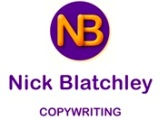Do you write blogs or emails that require the reader to scroll down? Or posts on Facebook that end in the infamous “Read more”?
If so, there’s a good chance that not many people are reading them.
People today have very short attention spans — and that’s by no means confined to kids. The reality is that we have so much information thrown at us throughout our waking hours that we’re easily distracted from anything we don’t see immediately as essential or diverting. How to save lots of money or cute cats.
Analysis of eye behaviour shows that attention tends to be crowded up at the top of any webpage. If people do scroll down, they’re often looking straight to the bottom — perhaps to find out what’s in it for them. All very well if you’re offering something obvious there, but even these people are missing what’s led up to your conclusion and might not understand it.
So does this mean you should only write short pieces that can be seen in one go?
That would be counter-productive. There are things we need to say that can’t be said in sound bites, or even a couple of paragraphs. A large part of soft marketing is offering advice or information that will be valuable to your target clients, and this needs to be longer than a single screen’s worth. Whether you’re explaining GDPR or giving advice on maintaining your roof, your article will be useless unless it’s substantial.
Instead, write as much as you need to — but make them scroll, and keep scrolling.
There are two ways of doing that, and they’re closely related. Firstly, it’s vital to be arresting in the section the reader will see straight away — above the fold, as it’s known. Tantalise them with a problem they’ll relate to and hint that you have an answer, or intrigue them so they’ll want to know where you’re going.
Secondly, it’s got to be well written. That doesn’t mean “sounding clever” — quite the reverse. It should, above all, be easy to read, but that’s best achieved by following all the principles of good writing, from grammar to narrative flow. And cut the jargon, apart from essential technical details. Plain English is great communication.
Finally, of course, if you’ve succeeded in compelling your readers to follow you right down to the bottom, you’ll need a worthwhile call to action to make the most of it. Like, for example, telling them to get in touch if they want written content that’s going to draw people to scroll all the way down.
That kind of thing.
Image by Bradley Davis, Creative Commons licence

